
| ENGLISH |  |
BAHASA INDONESIA |  |
日本語 |
|
JICA in Indonesia-Japan Expo 2008
Expo 2008 In relations to that, JICA Indonesia tried to connect the two milestones into one activity, which is the Indonesia-Japan Expo (IJE) 2008. We utilized the special event, co-organized by NIKKEI (Japan) and KOMPAS (Indonesia), as a means to review our past cooperation in Indonesia for the last half century and introduce our brand new picture to the general public. IJE, which was held from November 1 to 9, 2008 (exactly a month after the establishment of new JICA) at the Jakarta Fair Ground in Kemayoran area, was the most appropriate opportunity for it.
Booth Exhibition
Visitors from all ages and backgrounds spent time posing for photographs in the “MRT model” as if they were riding a real one. The reason behind it is probably because MRT, which has the worldwide image as clean and dependable, will be the first subway construction project in Indonesia, funded with the Japanese ODA Loan. We even had the honor of having Indonesia’s President Yudhoyono and former Japan’s Prime Minister FUKUDA “ride” the “train” together with other Indonesian VIPs on the Expo opening day.
MRT: The “Engineering Services for Jakarta Mass Rapid Transit (MRT) System Project” is JICA’s ODA Loan project to support the construction of the first subway in Indonesia. The construction itself will include a 14.5-km line connecting Lebak Bulus (South Jakarta) and Dukuh Atas (Central Jakarta), which is expected to become the backbone of the Indonesian capital city’s transportation system, carrying projected number of 200,000 - 300,000 passengers per day. The Loan amount of 1,869 million Yen finances the engineering service for basic design of the project, supporting the establishment of the MRT’s operating company, and assisting the tender process. MRT is expected to be completed later 2010s.
Another highlight of the JICA booth was the presence of police women from time to time. Some visitors may have thought of it as odd, but it actually made sense. They are real police officers from the Metro Bekasi Police Resort, or the Mekar Sari police post to be precise, which is one of the sites for the “Project on the Enhancement of Civilian Police Activities.” The all-women post is the first of its kind in this country; therefore we set up a similar but temporary one in the middle of the Expo arena. They were there to assist Expo visitors who need help, and our booth was a stop-over point for the officers every time they make their rounds. That way, visitors could experience chatting with policewomen, something already quite regular in Bekasi, but still rare in other parts of the country.
The “Project on the Enhancement of Civilian Police Activities” is a part of Japan’s assistance for the Reform of the Indonesian National Police (POLRI), which started in 2002 by establishing a model site in Bekasi, West Java, focusing not only on the establishment of facilities (in the form of police posts called “BKPM” inspired from the Koban in Japan) in which the police-community could build communication, but also on the improvement of the police personnel’s skills and knowledge in solving crimes & social problems in the area. The whole Japanese support for POLRI’s Reform has been introduced previously in the article on “Ibu Sri and ANZAI-san: The Who’s Who behind Japan’s Police Reform Support.”
Robot Contest Based on the background, JICA Indonesia and EEPIS collaborated for the implementation of a friendly robot contest called “IJE Robocon 2008” on the last day of the Expo. A total of ten (10) teams from Indonesian colleges and two (2) teams from Japanese colleges participated in the contest, each of the intelligent robots showcasing unique skill and design. Their priorities differ from each other as well; some focused on carrying the designated objects back to finish line, some on putting off as many candle lights as possible, and others on preventing opponents from getting any score.
The highlight of the contest must have been the semi final match between EEPIS and Kumamoto National College of Technology (KNCT); it was a match between former students and teachers, in which finally EEPIS team won. The KNCT team proudly commented on its loss that this result proved the success of our past teaching. Finally EEPIS won the title.
While the participating teams competing with each other vigorously, no one has forgotten that friendship is the basis of this event. This was evident at the sharing session in which they all bonded with each other, sharing own experience, techniques, and even small souvenirs. We, as organizer, could only hope this humble event would create a network of future leaders in the technology world.
Finally, with the Indonesia-Japan Expo 2008, we would like to warmly welcome the New Year 2009 and a new era of cooperation between the two countries. END |
|
||||||||||||||||||||||||||||||||||

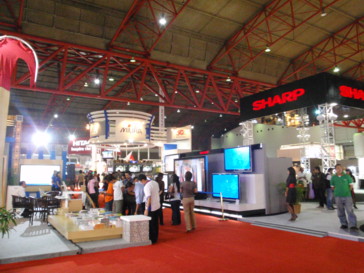
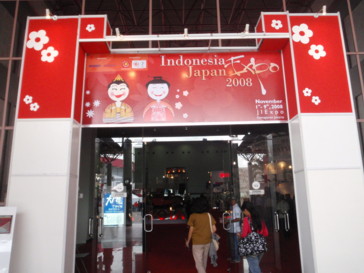
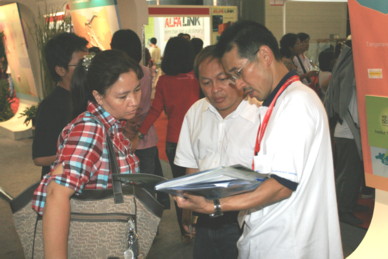
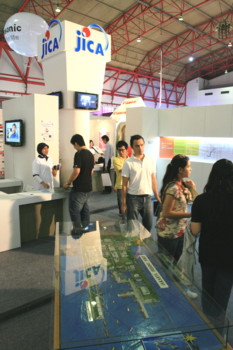
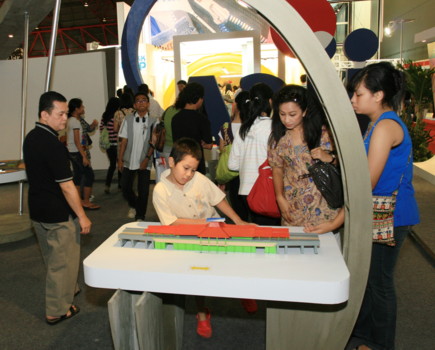
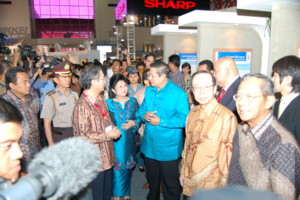
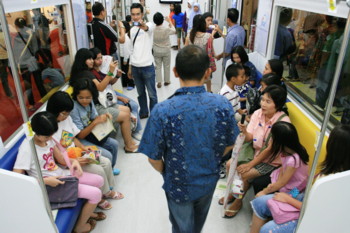
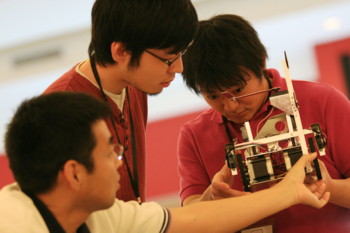

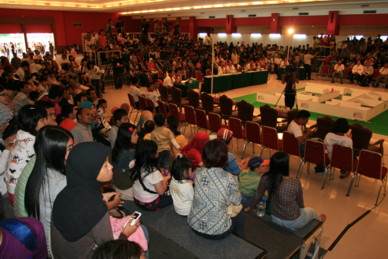
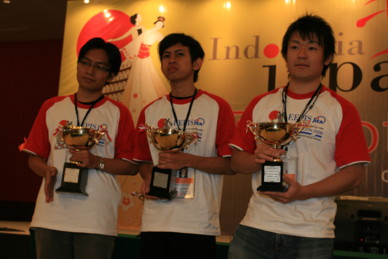

 Return Top
Return Top